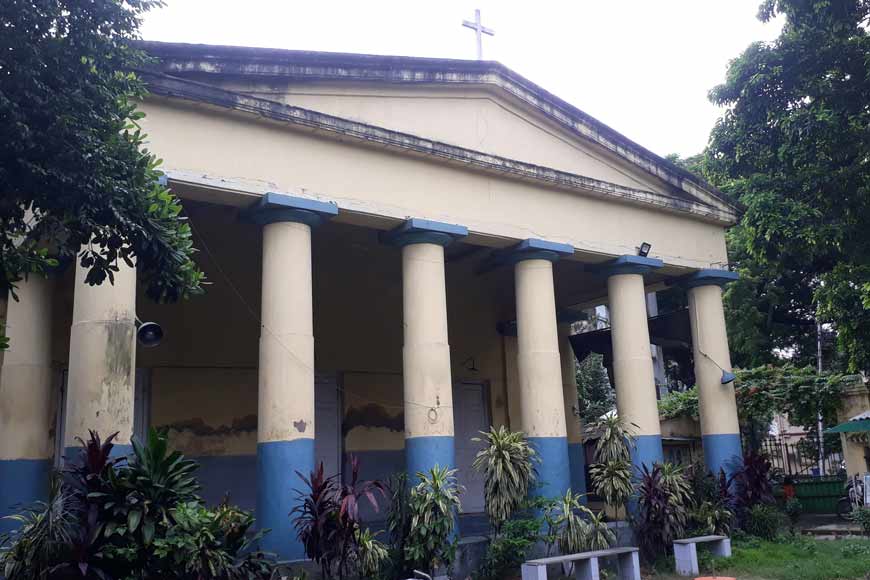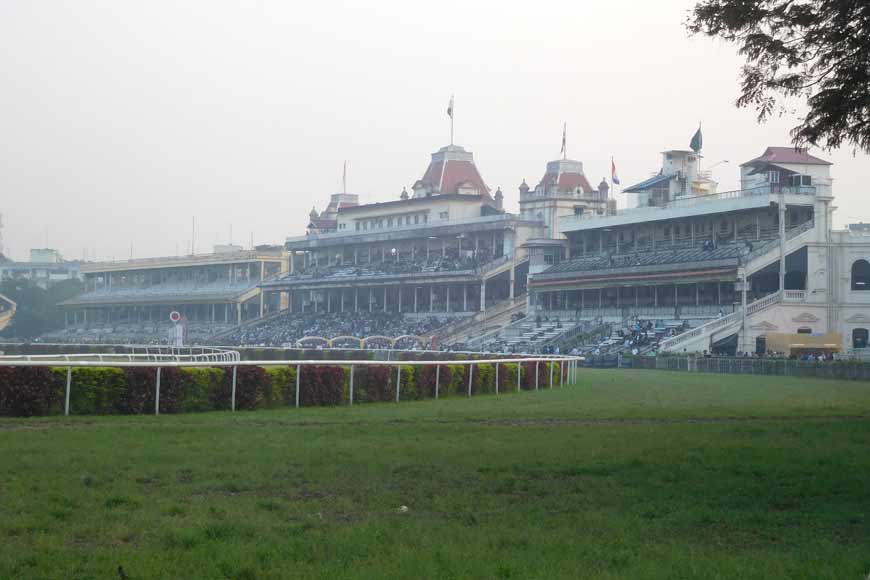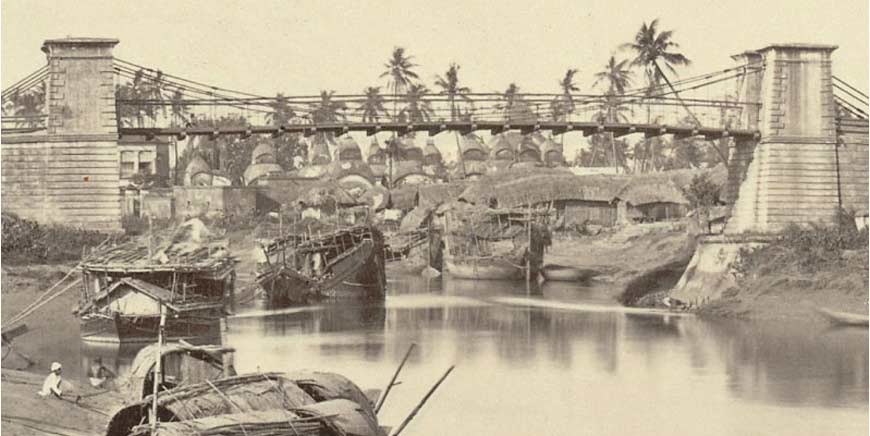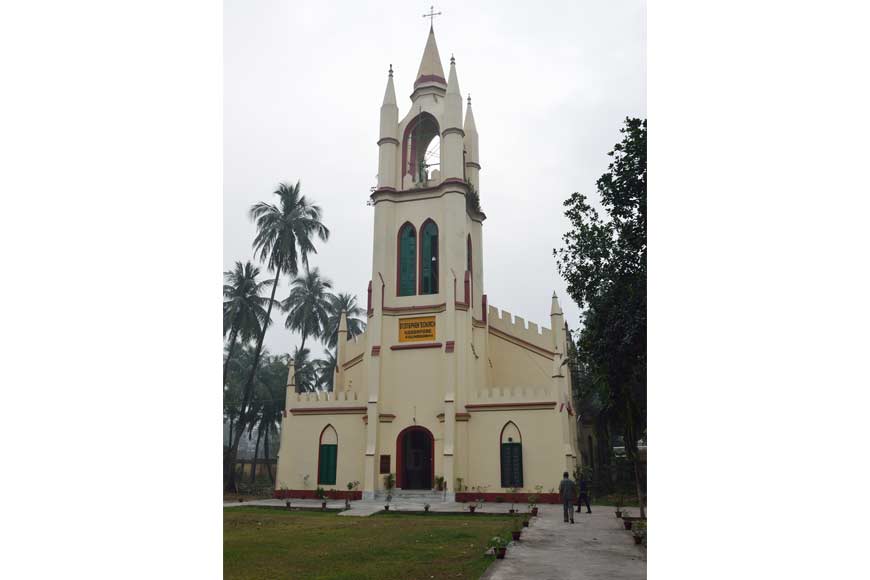Walk near the docks that made Calcutta

Hastings Chapel
As we near the end of our walking tour of Kolkata, it is now time to venture to the south and west, and heading to the centre. The best place to start is Rabindra Sadan, from where you can hop onto a bus for the short trip to Khidirpur, or Kidderpore as it is still occasionally spelled. The origin of the name Khidirpur is likely to have been ‘Khidr’ or ‘Khizr’, long considered one of the patron saints of Bengal’s fishing communities. The neighbourhood’s position alongside the river certainly makes the theory plausible.
Yet another theory has it that the name actually comes from Kedar, one of the names of Lord Shiva, a temple to whom once stood in the area. And a third, less convincing theory is that the area was named after Col. Robert Kyd, the botanist who established the Botanical Gardens at Shibpur. This would mean the area had a different name before Kyd’s time, no evidence for which has been found.
Point A - Hastings Chapel and ‘Phansi Ghar’
Geographically speaking, Hastings lies between the river Hooghly and the Maidan. The area was initially a Muslim burial ground. It then became ‘Coolie Bazaar’, when the workmen who built the present Fort William (following the Battle of Plassey in 1757) set up their shanties here in 1760 or thereabouts, and finally turned into a township for employees of the Ordnance and Commissariat departments of the East India Company. In addition, this was also the neighbourhood in which lived Richard Barwell, one of the earliest directors of the company. Therefore, the colonial flavour is strong in Hastings, not least in the Hastings Chapel, built in the 1840s for the area’s growing Christian population.
The chapel, with a foundation stone supposedly laid by Lady Bentinck, wife of the Governor-General, is modest and unassuming both inside and out, and in a surprisingly shabby state considering that it still hosts daily services. However, even shabbier is the condition of a memorial in the vicinity, to Maharaja Nandakumar, the doomed ‘friend’ of Warren Hastings. The spot where he was reportedly hanged in 1775 is diagonally opposite the PWD office complex at one end of Hastings, and is today an unkempt, overgrown plot of land, on which a circular white wall supposedly marks the gallows where Nandakumar was executed by the British. Stall owners around the spot still call it ‘phansi ghar’ (hanging room).

Point B - Racecourse
Across the road, on the eastern side of the flyover, is the racecourse of the Royal Calcutta Turf Club, whose predecessors were the Bengal Jockey Club set up in 1803, to oversee the races held at Akra near Calcutta, and then the Calcutta Turf Club set up in 1847. The races had moved to the Maidan in 1809, and the Jockey Club had laid out a new course in the southwest part of the Maidan in 1812, where the present racecourse is roughly located. A grandstand was added in 1820, and later extensively modified.
The Calcutta Turf Club was founded on February 20, 1847 to regulate all aspects of horse racing in the city, and it added ‘Royal’ to its name in 1912 after King George V attended the races here for the second time. At one time, the club had over 70 racecourses in the Indian subcontinent under its jurisdiction. The present club has three grandstands, which are open to the public except the Members’ Stands, and the main pavilion has three tiers, with elegant turrets and graceful wrought-iron railings.

Point C - Tolly Nullah
This is the Adi Ganga, which was also earlier known as Surman’s Creek and later as Tolly’s Nullah (canal), over which stands Khidirpur Bridge. From all accounts, Major William Tolly was an engineering mastermind, and in 1775, put forward the brilliant idea of deepening and extending the creek in order to reach the hinterlands alongside the Sundarbans to facilitate riverine trade. Accepted in 1777, the proposal resulted in the deepening of the canal upto Garia, and extension upto Shamukpota (today under Sonarpur tehsil, about 43 km from Kolkata), which meant it connected to the river Vidyadhari farther east. This brought the eastern hinterlands within easy reach of Calcutta, eliminating the need to build expensive roads.
Read the earlier episodes of our walk :
Enjoy the lockdown with your very own customised Kolkata Walk
A little bit of BBD Bag, a whole lot of Calcutta
Esplanade, the beating heart of old Calcutta
The places of worship in old Calcutta, and what we learn from them
Walk on for a perfect balance of religion and commerce
On the waterfront: a walk along the Hooghly
Walking around the ‘native’ palaces of Kolkata
A walk down Sealdah and Bowbazar, among the oldest areas of Kolkata
Walking through the centre of Kolkata
Old Calcutta’s temple trail, a cultural odyssey
Lost in obscurity, Calcutta’s oldest surviving temples
Walking down College Street, home to temples of learning
From Kali to Jagannath to Star Theatre, a walk to remember
Back to ‘saheb para’, the heart of White Calcutta
Caught between two worlds, walking in Calcutta’s grey town
Walk through Kolkata’s cities of the dead
As you cross the bridge and turn into Diamond Harbour Road, you will come across the mosque of Syed Shah and next to it, the temple of Panchananda (Lord Shiva by yet another name), said to have been built well over two centuries ago by Gokulchandra Ghoshal, once dewan to Governor Verelst of Bengal.

Point D - St Stephen’s Church
With a steeple apparently shaped like a ship’s lantern, reflecting the primarily seafaring nature of its congregation, this church was commissioned in 1844, with its foundation stone laid by outgoing Governor-General Lord Ellenborough. Situated right next to the compound of St Thomas Boys’ School, the church’s unique steeple is visible from Khidirpur Bridge. Today, its approach lies through the heavily congested Khidirpur market, but once you enter the premises, the serenity and peace are hard to ignore. Inside, the magnificent altar and stunning stained glass window are definitely worth a visit. Also don’t miss the numerous plaques on the walls, dedicated to deaths both old and recent. Restored post-2013, the church is in good shape and holds regular services.
Next week will see the end of this saga, featuring some of the city’s most prominent and recognisable structures. Until then, keep walking!











